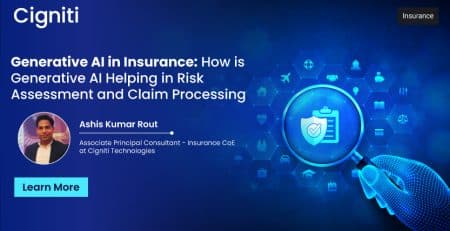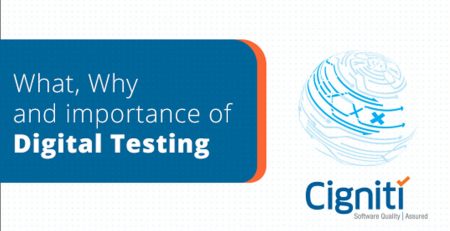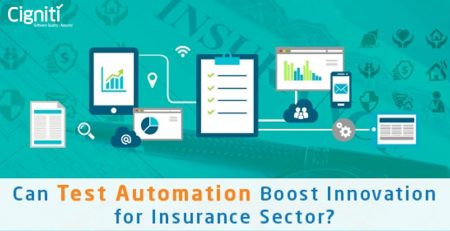Need for Robust Digital Transformation in the Insurance Sector
|
Listen on the go!
|
In this era where Digital Transformation is happening at warp speed, people from every walk of life are turning into digital experts. While the benefits of engaging in a digital transformation are obvious and unending, it is not without challenges – and CIOs face the majority of them.
As digital initiatives encompass all parts of the organization, CIOs need to develop solid working relationships beyond the C-suite to implement the digital transformation plan. The CIOs also need to spend more time on cross-functional collaboration, listen for what the biggest challenges are from various business functions, and also need to communicate how digital can solve those issues in a meaningful way. The other challenge is to find talented people who can implement their plans in the most effective manner.
Additionally, it is a known fact that the insurance industry tends to function along outmoded lines, and insurance companies with deep roots have been slow to adopt digital tools and business models. Obsolete organizational structures and legacy technology have also obstructed the rate of change. On the other hand, rest of the world and other industry sectors, such as retail, banking and travel, are already staking their claims in future’s digital landscape.
A few specific challenges that CIOs face are:
- Big data analytics and business intelligence
- Improving IT efficiencies and lowering costs
- Enterprise risk management & fraud detection
- Complying with ever-widening regulatory landscape
- Legacy modernization, process and systems improvement
- Adoption of disruptive digital technologies including SMAC
- Performance, security and privacy of applications and data
- Customer retention by ensuring enhanced customer experience
In such a scenario, CIOs of Insurance firms, must be attentive to the fact that they need to attract and retain digitally empowered today’s customers, if they intend to stay a step above their peers and competitors. According to a recent survey, 79 percent of consumers say that over the next few years, they expect to use online resources for insurance purchases.
Components of a Robust Digital Transformation Plan
One of the significant changes that insurance CIOs are noticing is that consumers are serious about online transactions. Technology savvy consumers are interested in getting insurance rates online. Industry leaders within life insurance have begun to make major pushes towards digital transformation. For example, global insurance company MetLife has announced a major initiative to become more digital, and they are currently investing $300 million a year in their digital transformation plans.
In going digital, companies can provide a more streamlined, seamless experience to their customers. However, the digital strategy needs to be well-defined. A robust digital strategy has several specific components, and understanding these components will provide CIOs the reasons to invest in the digital transformation.
- Customer Experience: Meeting the needs and expectations of customers is the driving reason behind going digital, so it makes sense to give this component the highest priority in digital transformation plan. To some extent, the aspects of superior customer experience online are self-evident: intuitive navigation, lucidity, an amalgamation of information, and options that feel empowering and can also be tailored. Rolling out a new digital experience will also include collecting feedback from representative customers who express willingness to be part of a beta testing group.
- Omni-Channel Delivery: The strategy to go digital must allow customers to receive the same access, branding and personalized information across web, mobile and live interactions with a business. Digital strategies must include methods for carrying a reliable experience across every medium, so that your brand voice and the product value can follow whichever access point your customer prefers.
- Improved Internal Operations: The digital plan should allow the company to speed up their own internal processes, reduce error and increase employee productivity. A review of the company’s internal structure and routines at the time of creating company’s digital structure is very important in order to benefit the most from technological streamlining.
- Advanced Analytics: Insurance CIOs are understanding the use of emerging technologies such as telematics, wearables, connected devices and IoT to build a smart ecosystem that monitors events and behavior in real-time. By correlating this data with internal and external data sources, insurers can establish an automated closed-loop feedback mechanism to prevent, mitigate and predict future losses. They could also suggest loss control measures that customers could adopt to gain premium advantage, or create a tailored risk profile for each customer and better match the premium offered with the risk characteristics presented.
- Artificial Intelligence: Insurers can embrace innovative ways of transforming the customer experience such as a digital strategy that uses natural language processing (NLP), speech recognition and virtual assistants. Insurers are also using artificial intelligence-based technologies such as robotic process automation (RPA) to reduce repetitive tasks and free agents to undertake more complex work that requires human elements, such as creativity, empathy and complex decision-making.
Benefits of Going Digital
With a robust digital transformation, insurance CIOs will see a marked improvement in their ROI. According to Harvard Business Review, “a thoughtful digitization program can deliver up to 65 percent in cost reduction, a 90 percent reduction in turnaround time on key insurance processes, and improve conversion rates by more than 20 percent.” Increased revenue also springs from the fact that digital marketing lets Insurance companies connect with customers in entirely new ways. Social media marketing enables insurers to establish a personal connection with current and potential customers while also collecting usable data streams that enable more accurate rate-setting and risk calculations.
To move ahead Insurance CIOs need to work with a team that:
- Can offer deep-domain expertise across different segments of Insurance sector
- Can perform regulatory testing specific to various geographies including State-based Insurance Regulatory System, Federal Regulation of Insurance, NAIC, ABI, IRDA, IRTA, and Unclaimed Property Act (UPA))
- Has reusable test repositories and tool-agnostic test automation frameworks that reduce testing efforts
- Has SMEs & BAs who are experts in end-to-end policy life cycle management and who understand business priorities to deliver high quality solutions
- Have industry recognized certifications like LOMA, ANSI, CPCU in Life and Non-Life insurance domains
At Cigniti, we provide all this, and more. Contact us to know more.





Leave a Reply